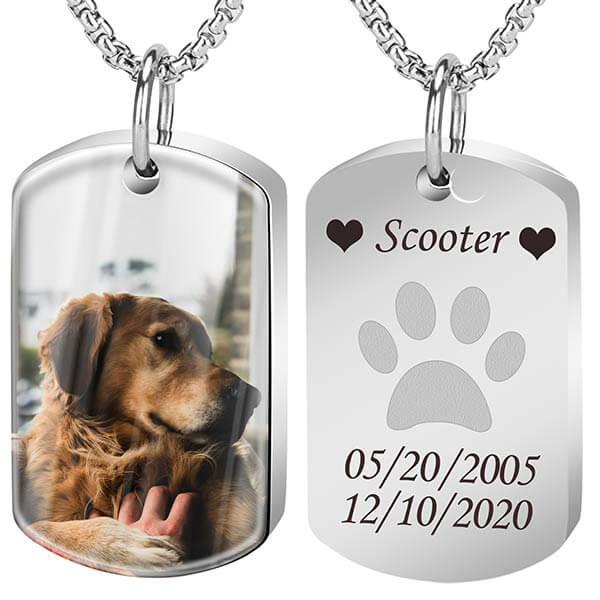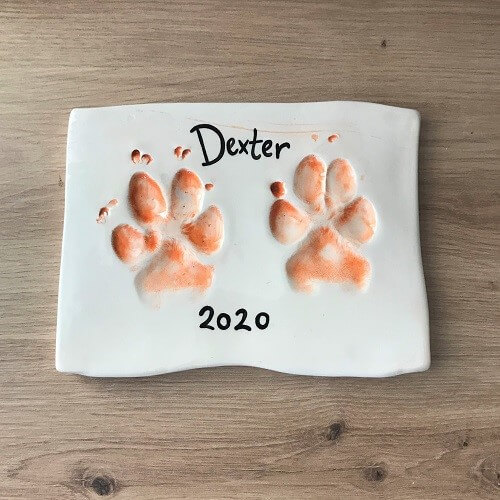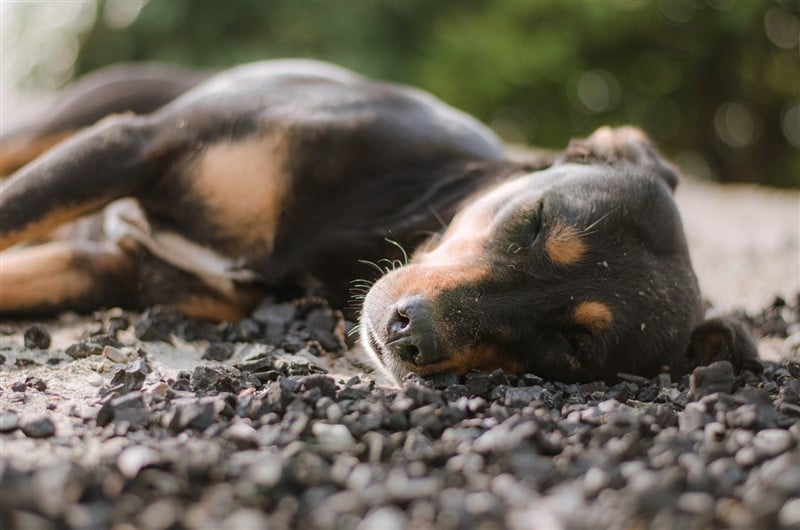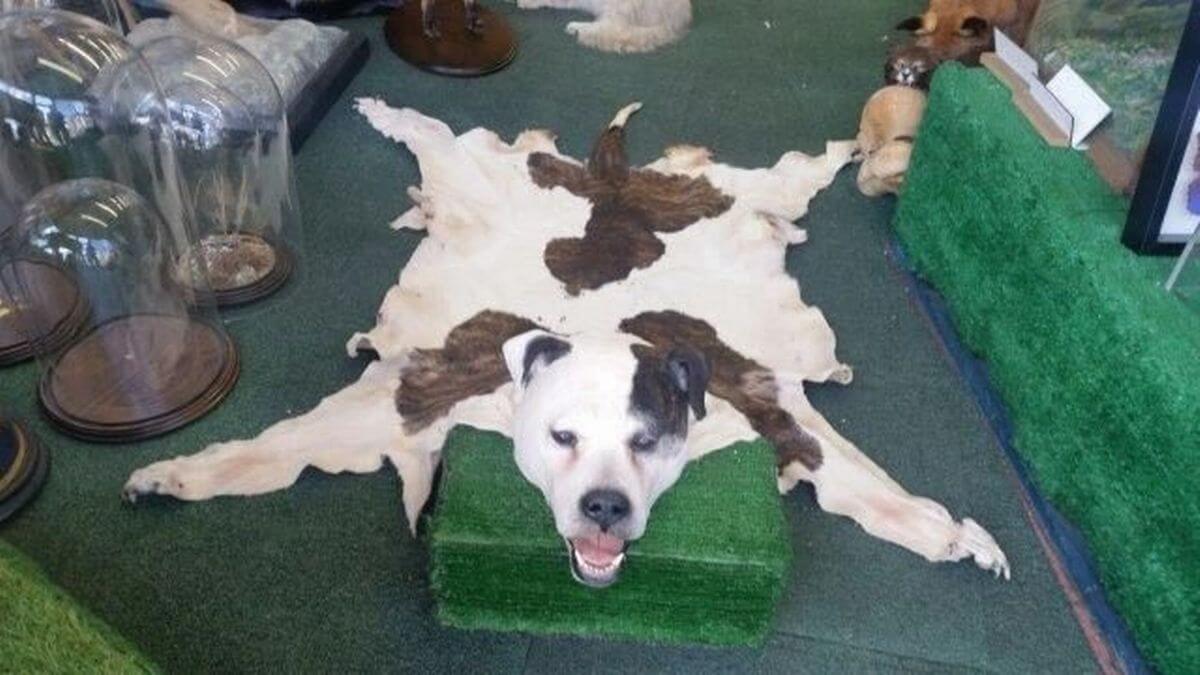The loss of a pet is one of the most difficult experiences a person can go through.
Pets are important members of the family and they provide us with love, companionship, and lots of laughter.
It is, therefore, logical that their passing leaves a deep void.
As you go through the grieving process, you also have to decide on how to dispose of the remains—do you want to bury the pet or do you want to preserve their remains?
There are lots of benefits to preserving as we will see below but first, let us consider the different options you have to preserve your dead pet.
Most Common Methods of Preserving Dead Pets
1. Taxidermy

Taxidermy is the process of preserving animal bodies by stuffing and mounting them.
Though it is most commonly associated with preserved hunting trophies, taxidermy can also be used to preserve pets that have passed away.
For some pet owners, the idea of keeping their deceased animal’s body around may seem strange or even morbid. Learn more here: Is It Weird To Taxidermy Your Pet?
However, taxidermy can provide a sense of closure and keep the memory of a beloved pet alive.
In addition, taxidermy can be a beautiful way to display the animal’s unique markings and fur pattern.
If done correctly, taxidermy can be an artful way to memorialize a pet that has passed away.
You may also want to check: 12 Tips for Stuffing Dogs after Death
2. Cloning

Cloning is the process of creating an identical copy of a living thing.
In the case of dead pets, cloning is often used to create a replica of the animal.
The process begins with extracting DNA from the animal’s cells.
This DNA is then inserted into an egg cell that has had its DNA removed.
The egg is then implanted into a surrogate mother, who carries the clone to term.
Cloning has been used to create clones of many different animals, including dogs, cats, horses, etc.
While the process is still relatively new, it is quickly gaining traction.
Some people believe that cloning is unnatural and unethical, while others see it as a way to bring back a loved one.
There is no right or wrong answer, but it’s important to consider all sides of the issue before making a decision.
You may want to check: Can You Clone A Dog? (Plus Dog Cloning FAQs)
3. Jewelry or Other Keepsakes

Another way to preserve a dead pet is by turning their remains into jewelry or other keepsakes.
There are companies that offer this service, where they will take the ashes or hair of a pet and turn it into a piece of jewelry or trinket for the owner to keep.
These items can serve as a physical reminder of the pet and provide comfort to those grieving their loss.
4. Cremation

Cremation is the process of reducing a body, or remains, to ash through intense heat.
For pet owners, cremation offers an alternative to burial or taxidermy as a way to preserve their animal companions after death.
The ashes can be kept in an urn or scattered in a special location.
Many pet owners choose cremation as it allows them to keep their beloved pets close, even after they are gone.
5. Preserving Their Paw Print

Another option for pet owners is to preserve their pet’s paw print.
This can be done by using ink and paper or casting the paw in clay.
The resulting print can then be framed and displayed as a memorial to the beloved animal.
This simple yet meaningful gesture allows pet owners to keep the memory of their furry friend alive.
How To Preserve A Pet After Its Passing Until The Cremation/Taxidermy

After losing your pet, it is recommended to schedule the cremation/taxidermy as soon as possible.
However, it is not always possible to do it shortly after the demise.
You may be held up at work, you might be waiting for friends and family to come and be part of the ceremony, or you might just have a hard time getting a slot.
Whichever the case may be, you will have to think of the best way to preserve the pet’s body until the cremation/taxidermy appointment.
One option is to keep the pet’s body frozen in a freezer or refrigerated unit if you have access to one.
It is important to note that the pet’s body should be placed in a sealed bag or container before being put into the freezer, to prevent any odor or leakage.
Another option is to have the pet’s body embalmed by a professional, but this can be costly and may not be necessary unless you plan on having an open-casket viewing or extended visitation period before cremation/taxidermy.
Freeze-drying is another great option. Freeze drying is a process that removes fluids from the body by turning them into ice and then sublimating, or vaporizing, the ice.
The body is typically placed in a vacuum chamber, where the ice sublimes into vapor without ever passing through the liquid phase.
This leaves the item itself completely unharmed and greatly reduces its weight and volume.
Freeze-dried bodies can be stored indefinitely, making freeze-drying an ideal way to preserve cherished memories.
For pet owners, freeze-drying can provide a way to keep their beloved companions with them long after they have passed away but it can also be a solution for preserving the pet temporarily as you await cremation/taxidermy.
No matter what method you choose, it is important to seek the guidance of a professional in handling and preserving your pet’s body.
It is also important to keep in mind that while the preservation process can be helpful for both practical and emotional reasons, ultimately it is only temporary until the final goodbye at the cremation/taxidermy appointment.
Grieving the loss of a pet is an incredibly difficult process, and making decisions about preserving their body can add emotional strain, so be sure to get all the help you can from friends and family.
Benefits of Preserving Your Dead Pet
While the thought of preserving our beloved furry friends may seem strange at first, there are actually many benefits to doing so.
To begin with, it allows you to keep a physical reminder of your pet close by.
You can always take comfort in knowing that your pet will always remain with you in some form.
Additionally, preserving your pets can help you to cope with the grieving process and eventually move on.
But other advantages are seldom thought of—for instance, you can preserve your pet to be passed down as an heirloom for future generations.
You could also use it as a taxidermy display in your home, or even donate it to a museum for educational purposes. This is especially so if your pet has some unique characteristics that you would want to preserve for posterity.
And the best part is that you get to choose how your pet will be preserved, from traditional taxidermy to freeze-drying or even cloning.
Is It Safe To Put A Dead Pet In The Freezer?
If you live in an apartment or otherwise do not have access to a yard, you may be wondering if it is safe to put a dead pet in the freezer.
The short answer is yes, it is safe to store a dead pet in the freezer until you can bury it.
However, there are a few things you should keep in mind.
- First, be sure to wrap the body in a paper or cloth bag before placing it in the freezer. This will help to prevent any leakage.
- Secondly, if possible, store the body in a dedicated freezer or one that is rarely used. This will help to avoid any cross-contamination with food.
- Finally, be sure to label the body clearly to avoid any mix-ups.
While it may not be the most pleasant option, storing a dead pet in the freezer is a safe and effective way to hold onto the remains until you can give them a proper burial.
How Long Can You Keep A Dead Pet At Home?

It’s ok to leave your dead pet at home for a couple of hours as you figure out how you want to proceed.
However, you may want to make a quick decision because the dead pet will start releasing odor after 6-12 hours.
It’s best to consult with your veterinarian or pet funeral home for advice on how to handle the situation and preserve your pet in the way you desire.
Their professionals will also be able to guide you on any necessary legal requirements and regulations for disposing of the remains.
How Long Can You Wait To Cremate A Dog?
It is a good idea to cremate your dog within 12-24 hours before decomposition sets in.
That said, the length of time that a dog’s body can be safely stored will depend on several factors.
For example, if the body is stored in a cool, dry environment, it will decompose more slowly than if it is stored in a warm, humid environment.
In addition, the size and breed of the dog will also affect the rate of decomposition.
Generally speaking, smaller dogs will decompose more quickly than larger dogs.
As a result, it is important to consult with a veterinarian or other animal expert before making any decisions about cremating a dog.
Closing Thoughts
The loss of a pet can be devastating, but there are ways to preserve their memory and keep them close.
From traditional options like taxidermy or cremation to more unique choices like jewelry made from remains, the decision is ultimately up to the individual pet owner.
It’s important to consider all options and consult with professionals for guidance and assistance in making these difficult decisions.
In the end, honoring and preserving our furry friends allows us to keep their memory alive and bring comfort during the grieving process.
Other Posts You May Want to Check:
Do Our Pets Miss Us When They Die?
Image sources: 1, 2, 3
As an Amazon Associate, we may receive a small commission from qualifying purchases but at no extra cost to you. Learn more. Amazon and the Amazon logo are trademarks of Amazon.com, Inc, or its affiliates.

